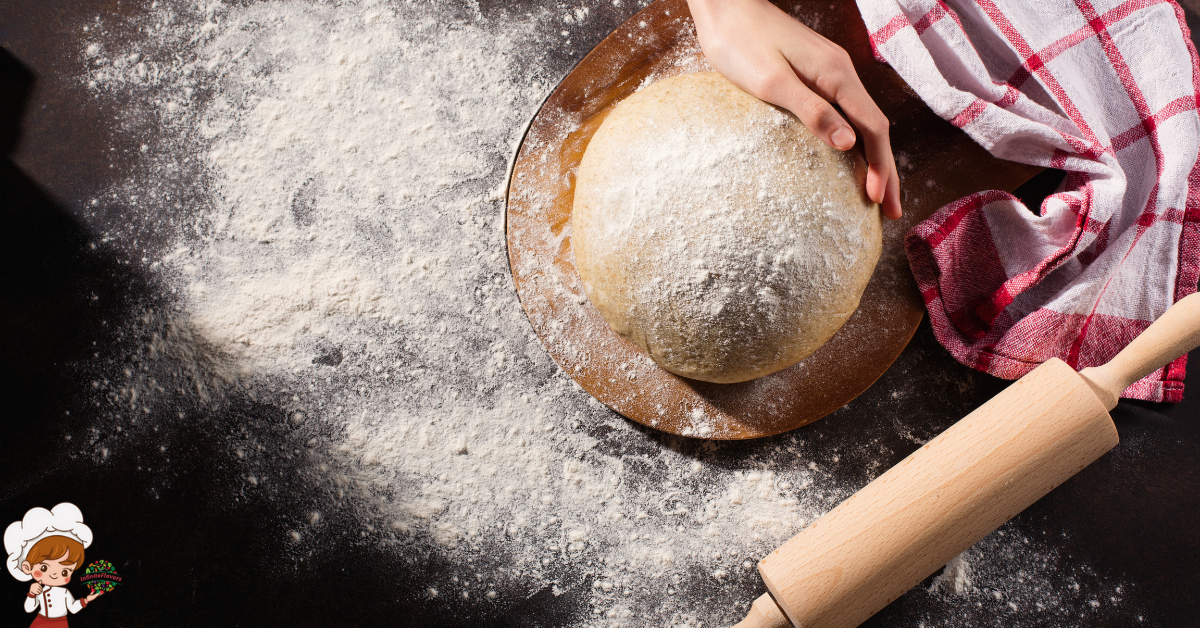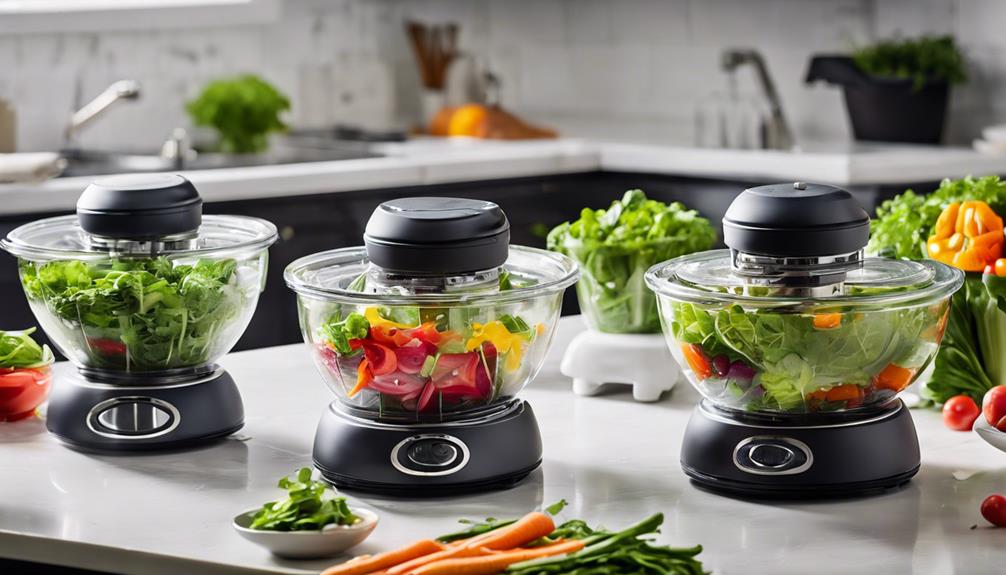The Best Techniques For Baking Sourdough Bread

Baking Sourdough Bread; So you’ve decided to embark on the journey of baking your own sourdough bread. Congratulations! With its tangy flavor, chewy texture, and crispy crust, sourdough bread is a timeless classic that never goes out of style. But where do you begin? How do you achieve that perfect balance of flavors and textures? Fear not, for in this discussion, we will explore the techniques and secrets behind baking exceptional sourdough bread. From understanding the basics of sourdough to troubleshooting common issues, this guide will equip you with the knowledge and skills to become a master sourdough baker. Get ready to elevate your bread-making game to new heights!
Understanding the Basics of Sourdough
To understand the basics of sourdough, you must first grasp the fundamental principles behind the fermentation process. Sourdough bread gets its distinct flavor and texture from the flavorful fermentation that occurs when natural yeasts and lactobacilli interact with flour and water. This process can be broken down into three key stages: the creation and maintenance of a sourdough starter, the fermentation of the dough, and the baking of the bread.
Maintaining starter freshness is crucial for successful sourdough baking. A sourdough starter is a mixture of flour and water that captures wild yeasts and bacteria from the environment. These microorganisms break down the complex carbohydrates in the flour, producing carbon dioxide and lactic acid. This creates the air pockets and tangy flavor that sourdough is known for.
To keep your starter fresh, you need to feed it regularly. This involves discarding a portion of the starter and replacing it with fresh flour and water. The discarded portion is removed to prevent the accumulation of harmful byproducts. Feeding the starter provides fresh nutrients for the microorganisms to thrive, ensuring a healthy and active fermentation process.
Maintaining the right conditions for fermentation is also crucial. Sourdough thrives in a warm and humid environment, typically around 75 to 85 degrees Fahrenheit. You can achieve this by placing your dough in a proofing box or a warm spot in your kitchen. The length of fermentation will depend on factors such as the ambient temperature and the strength of your starter. The longer the fermentation, the more complex and developed the flavor of the bread will be.
Understanding the basics of sourdough fermentation and maintaining starter freshness are essential for baking delicious and flavorful sourdough bread. By paying attention to these fundamental principles, you can achieve the perfect rise, texture, and taste in your homemade loaves.
Choosing the Right Flour for Your Starter
When it comes to choosing the right flour for your sourdough starter, there are a few key tips to keep in mind. First, opt for high-quality, unbleached flours that are free from additives and preservatives. These types of flours will provide the best environment for your starter to thrive. Additionally, it’s important to consider the compatibility of the flour with your starter. Different flours have different protein levels, which can affect the strength and structure of your starter. Experiment with different flours to find the one that works best for you.
Flour Selection Tips
For optimal results in choosing the right flour for your starter, carefully consider the characteristics and qualities that will contribute to a successful sourdough bread baking experience. Different flour types have varying protein content, which directly affects gluten development. Gluten is the protein responsible for the structure and texture of bread. For a well-developed gluten network, opt for flours with higher protein content, such as bread flour or high-gluten flour.
These flours have around 12-14% protein, ensuring a strong and elastic dough. On the other hand, all-purpose flour, with around 10-12% protein, is a versatile option that strikes a balance between structure and tenderness. If you prefer a lighter and more delicate texture, pastry flour or cake flour, with lower protein content (around 8-10%), is the way to go. Choose your flour wisely, and your sourdough bread will turn out beautifully.
Starter Flour Compatibility
Choosing the right flour for your starter is crucial to ensure optimal compatibility and success in your sourdough bread baking journey. While traditional wheat flour is commonly used, there are other starter flour alternatives available, especially for those seeking gluten-free options. One popular alternative is rice flour, which is easily digestible and produces a mild, subtle flavor in your starter.
Another option is buckwheat flour, known for its rich, nutty taste and gluten-free properties. For a more diverse flavor profile, you can try using a combination of different flours, such as a blend of white rice flour, sorghum flour, and tapioca flour. Experimenting with different starter flour alternatives can add variety to your sourdough bread and cater to specific dietary needs, all while maintaining the key characteristics of a successful starter.
Creating and Maintaining a Sourdough Starter
To successfully create and maintain a sourdough starter, it is imperative to carefully follow a precise set of steps and pay close attention to the details. The first step is to choose the right flour for your starter. Opt for high-quality bread flour or whole wheat flour, as they contain more natural yeast and bacteria. The hydration of your starter is also crucial. Aim for a 100% hydration, which means using equal parts flour and water by weight. This ratio provides the ideal environment for fermentation.
Once you have your ingredients ready, it’s time to establish a feeding schedule. Start by combining equal parts flour and water in a clean container, and stir until well combined. Cover loosely with a clean cloth or plastic wrap, allowing the mixture to breathe. Let it sit at room temperature for 24 hours. After this initial period, discard half of the mixture and feed it with fresh flour and water, maintaining the 1:1:1 ratio. Repeat this process every 24 hours for the next few days until your starter becomes active and bubbly.
During the feeding process, observe your starter closely. Look for signs of activity, such as rising, bubbles, and a tangy aroma. Adjust your feeding schedule accordingly. If your starter is not showing much activity, you may need to increase the feeding frequency or adjust the feeding ratio. On the other hand, if your starter is becoming too active or develops a strong acidic smell, you might need to reduce the feeding frequency.
Creating and maintaining a sourdough starter requires precision and attention to detail. By following these steps and closely monitoring your starter, you’ll be able to cultivate a healthy and robust starter that will add a delightful tang to your sourdough bread.
Mastering the Fermentation Process
Once your sourdough starter is active and bubbling, it’s time to dive into the meticulous process of mastering the fermentation stage. The fermentation stage is crucial for developing the flavor, texture, and rise of your sourdough bread. To achieve the best results, you need to pay close attention to fermentation time and controlling the temperature.
Fermentation time plays a vital role in the development of sourdough bread. It allows the wild yeast and bacteria in the starter to break down the complex carbohydrates in the flour, producing carbon dioxide and other flavor compounds. The length of fermentation time can vary depending on factors such as the strength of your starter, the ambient temperature, and the desired flavor profile. Generally, a longer fermentation time will result in a more pronounced sour taste and a more open crumb structure.
Controlling the temperature during fermentation is equally important. Temperature affects the activity of the yeast and bacteria in your starter. A warmer environment speeds up fermentation, while a cooler one slows it down. It’s recommended to ferment the dough at around 75-80°F (24-27°C) to achieve a balanced flavor and texture. If your kitchen is too cold, you can use a proofing box or place the dough in a slightly warmed oven with the light on. On the other hand, if your kitchen is too warm, you can refrigerate the dough for a slower fermentation.
Mastering the fermentation process requires precision and expertise. By carefully managing fermentation time and controlling the temperature, you can achieve the perfect flavor, texture, and rise in your sourdough bread. So, pay attention to these details and enjoy the delicious results of your efforts.
Mixing and Kneading the Dough
Now let’s focus on the key points when it comes to mixing and kneading the dough for your sourdough bread. Achieving the proper dough consistency is crucial for a successful bake, as it affects the texture and structure of the final loaf. Additionally, using the correct kneading technique ensures proper gluten development, resulting in a light and airy crumb. Paying attention to these details will help you achieve the perfect sourdough bread every time.
Proper Dough Consistency
Achieving the perfect consistency of your sourdough dough requires ensuring that the mixing and kneading process is executed with precision and expertise. Proper dough consistency is influenced by two important factors: dough hydration and gluten development. The hydration level determines the amount of water in the dough, affecting its texture and structure. To achieve the desired consistency, it is crucial to measure the water accurately and adjust it according to the recipe’s hydration ratio. Kneading the dough helps develop gluten, a protein that gives bread its structure and elasticity.
Vigorous kneading helps align the gluten strands, resulting in a strong and cohesive dough. However, be careful not to over-knead, as this can lead to a dense and tough bread. By focusing on dough hydration and gluten development, you can master the art of achieving the perfect consistency in your sourdough bread.
Correct Kneading Technique
To ensure the perfect consistency of your sourdough dough, mastering the correct kneading technique is essential in achieving an expertly mixed and well-developed dough. Proper kneading technique involves a series of precise motions that help develop gluten and distribute yeast evenly throughout the dough. To begin, place the dough on a lightly floured surface and use the heel of your hand to push the dough away from you. Fold it back over itself and repeat. This process helps stretch and strengthen the gluten strands. Avoid common kneading mistakes such as using too much flour, which can result in a dry and dense loaf.
Additionally, be mindful of overkneading, as it can lead to a tough texture. Pay attention to the dough’s consistency and adjust accordingly. With practice, you’ll soon achieve the perfect balance of a well-kneaded sourdough dough.
Shaping and Proofing the Loaf
For optimal results when shaping and proofing your sourdough loaf, carefully follow these expert techniques. Shaping the dough properly is crucial to achieving a well-formed and evenly baked loaf. Start by gently patting down the dough to release any excess gas. Then, using your fingertips, fold the edges of the dough towards the center, creating tension on the surface. Rotate the dough and repeat this process until you achieve a tight, round shape. This helps to create a well-developed structure and an even crumb.
Proofing time management is another critical aspect of baking sourdough bread. After shaping the dough, place it in a proofing basket lined with a cloth or dusted with flour to prevent sticking. Cover the dough with a damp cloth or plastic wrap to maintain moisture. The proofing time will vary depending on factors such as room temperature and the strength of your starter. A good rule of thumb is to let the dough proof until it has visibly expanded, usually for about 2 to 4 hours. However, keep a close eye on the dough as overproofing can lead to a collapsed loaf with a dense texture.
To ensure precision, it’s recommended to do a finger poke test during the proofing process. Gently press your finger into the dough. If the indentation slowly springs back, the dough is ready for baking. If it springs back quickly, the dough needs more time to proof. On the other hand, if the indentation remains, the dough may be overproofed, and you should bake it immediately to salvage the loaf.
Baking With Steam for a Crispy Crust
To achieve a crispy crust on your sourdough bread, using steam during the baking process is essential. The benefits of using steam include creating a moist environment in the oven, allowing the dough to rise properly and develop a beautiful crust. By introducing steam, you ensure that the bread bakes evenly and achieves that desirable crunch when you take a bite.
Steam for Crusty Bread
Achieving a perfectly crispy crust on your sourdough bread requires the strategic use of steam during the baking process. One effective method is using a Dutch oven, which traps the steam and creates a humid environment. Preheat the Dutch oven along with the oven, and once the dough is ready, carefully transfer it into the hot pot. Cover it with the lid to trap the steam and bake as usual. The steam helps to create a moist atmosphere that promotes crust development, resulting in a beautifully crisp exterior. If you don’t have a Dutch oven, there are alternative methods you can try.
For example, you can place a pan of boiling water on the bottom rack of the oven, or spritz the dough with water before baking to introduce steam. These techniques may not be as effective as using a Dutch oven, but they can still contribute to achieving a crusty bread. Remember, the key is to introduce steam in the early stages of baking to maximize crust development.
Benefits of Using Steam
Using steam during the baking process provides numerous benefits for achieving a perfectly crispy crust on your sourdough bread. The combination of heat and moisture created by the steam helps improve the crust texture, resulting in a beautifully golden and crunchy exterior. As the bread bakes, the steam prevents the crust from drying out too quickly, allowing it to expand and develop a desirable thickness.
This technique also enhances the bread flavor by promoting caramelization, which adds depth and complexity to the taste. The steam helps to create a moist and tender crumb, contrasting perfectly with the crisp crust. When using steam, it is crucial to generate enough moisture to create the desired effect, whether by using a steam pan, spraying water, or using a Dutch oven. With the right amount of steam, you can elevate your sourdough bread to a whole new level of deliciousness.
Achieving the Perfect Oven Spring
For optimal results, ensure that your sourdough bread achieves the perfect oven spring by employing the following techniques. The oven spring is the final rise that occurs in the bread during the early stage of baking. It is crucial for creating a light and airy crumb, as well as achieving an ideal crust color. To achieve the perfect oven spring, start by preheating your oven to the recommended temperature. This will ensure that the bread bakes evenly and rises properly. Place a baking stone or a heavy baking sheet in the oven during preheating to create a hot surface for the bread to bake on.
Once the dough has gone through its final proofing, carefully transfer it onto the hot baking surface. This will create a sudden burst of heat, which is essential for the bread’s final rise. To further enhance the oven spring, create steam in the oven. This can be done by placing a pan of boiling water on the bottom rack or by spraying water into the oven using a spray bottle. The steam will keep the crust moist and allow the bread to expand fully. Remember to quickly close the oven door to trap the steam inside. By following these oven spring techniques, you can achieve a beautifully risen loaf with a perfectly golden crust.
Cooling and Storing Your Sourdough Bread
To properly preserve the quality of your freshly baked sourdough bread, it is essential to follow the correct cooling and storing techniques. After your bread has finished baking, it is crucial to allow it to cool completely before storing. This process helps to retain its texture and prevent it from becoming soggy.
To cool your sourdough bread, start by placing it on a wire rack. This allows air to circulate around the bread, promoting even cooling. Avoid placing the bread on a solid surface, as this can trap moisture and result in a soggy crust.
Another cooling technique you can utilize is to flip the bread upside down halfway through the cooling process. This helps to prevent the bottom crust from becoming too moist.
Once your sourdough bread has cooled completely, it is time to store it properly. The best way to store your bread is in a paper bag or a bread box. These options allow the bread to breathe and prevent it from becoming stale. Avoid using plastic bags, as they can trap moisture and cause mold to develop.
If you find that you have leftover bread that you won’t be able to consume within a day or two, it is best to slice it and freeze it. Freezing helps to maintain the bread’s freshness for an extended period. When you’re ready to enjoy your frozen bread, simply thaw it at room temperature or toast it for a warm and crispy treat.
Troubleshooting Common Sourdough Bread Issues
After properly cooling and storing your sourdough bread, it is important to address any potential issues that may arise during the baking process to ensure a successful outcome. Troubleshooting crust problems and fixing dense loaves are two common issues that can occur when baking sourdough bread. Let’s dive into each problem and explore the solutions.
When it comes to troubleshooting crust problems, there are a few things to consider. Firstly, if your crust is too pale and lacks the desired golden-brown color, it could be due to insufficient heat in your oven. Preheating your oven at a higher temperature or extending the baking time can help achieve a better crust color. On the other hand, if your crust is too dark or even burnt, it may be a result of excessive oven temperature. Lowering the temperature slightly and monitoring the baking process closely can solve this issue.
Now, let’s talk about fixing dense loaves. Dense bread is often a result of inadequate gluten development. To address this, you can try increasing the kneading or folding time during the dough preparation stage. Additionally, using bread flour instead of all-purpose flour can also improve the gluten structure. Another factor that can lead to dense loaves is overproofing. If your dough has risen for too long, it can lose its structure and become dense. To prevent this, keep a close eye on the dough during the proofing process and adjust the fermentation time accordingly.
Experimenting With Flavors and Add-Ins
Discover a wide range of exciting flavors and add-ins to elevate your sourdough bread baking experience. When it comes to experimenting with flavors and add-ins in sourdough bread, the possibilities are endless. By combining different ingredients, you can create unique and delicious flavor combinations that will delight your taste buds. From herbs and spices to nuts and dried fruits, there are countless creative mix-ins that can take your sourdough bread to the next level.
One popular flavor combination is rosemary and sea salt. Adding fresh rosemary and a sprinkle of sea salt to your dough can infuse it with a fragrant and savory taste. The earthy aroma of rosemary pairs perfectly with the tangy flavor of sourdough, while the sea salt adds a hint of saltiness that enhances the overall taste.
If you prefer a sweeter flavor, consider adding dried fruits and nuts to your sourdough bread. Chopped dried apricots, cranberries, or raisins can add a burst of sweetness to each bite, while nuts like walnuts or almonds can provide a satisfying crunch. These mix-ins not only add flavor but also texture, making your sourdough bread even more enjoyable to eat.
For those who enjoy a bit of heat, adding spices like chili powder or crushed red pepper flakes can give your sourdough bread a spicy kick. Just be mindful of the amount you use, as spices can easily overpower the other flavors in your bread.
Incorporating different flavors and add-ins into your sourdough bread allows you to unleash your creativity and personalize your baking experience. So go ahead, experiment with different flavor combinations and mix-ins, and see what delightful creations you can come up with. Happy baking!
Baking Sourdough Bread; Frequently Asked Questions
How Long Does It Take to Create and Maintain a Sourdough Starter?
Creating and maintaining a sourdough starter takes time and dedication. You’ll need to feed it regularly, typically every 12 hours, for about 5 to 7 days until it becomes active and bubbly.
Can I Use Whole Wheat Flour Instead of All-Purpose Flour for My Sourdough Starter?
You can definitely use whole wheat flour instead of all-purpose flour for your sourdough starter. Whole wheat flour adds more flavor, nutrients, and a denser texture to your sourdough bread. It’s a healthy and delicious choice.
What Is the Ideal Room Temperature for Fermenting Sourdough Dough?
The ideal room temperature for fermenting sourdough dough is around 70-75 degrees Fahrenheit. However, you can experiment with different temperatures to achieve different flavors and textures. Alternative flours like whole wheat can also be used in sourdough bread.
How Long Should I Let the Dough Proof Before Baking?
To achieve the best results when baking sourdough bread, it is crucial to consider the dough proofing time. The ideal duration can vary depending on factors such as room temperature and desired flavor development.
Can I Freeze My Sourdough Bread for Later Use?
Yes, you can freeze your sourdough bread for later use. To store sourdough bread leftovers, wrap them tightly in plastic wrap or aluminum foil before placing them in the freezer. This will help maintain freshness and prevent freezer burn.
Conclusion
In conclusion, mastering the art of baking sourdough bread requires a deep understanding of the fermentation process, choosing the right flour for your starter, and precise mixing and kneading techniques. Achieving the perfect oven spring and troubleshooting any issues that may arise are also essential. With practice and attention to detail, you can create delicious and flavorful sourdough bread that will impress your family and friends. So go ahead, experiment with flavors and add-ins to elevate your sourdough bread to new heights of deliciousness. Happy baking!








